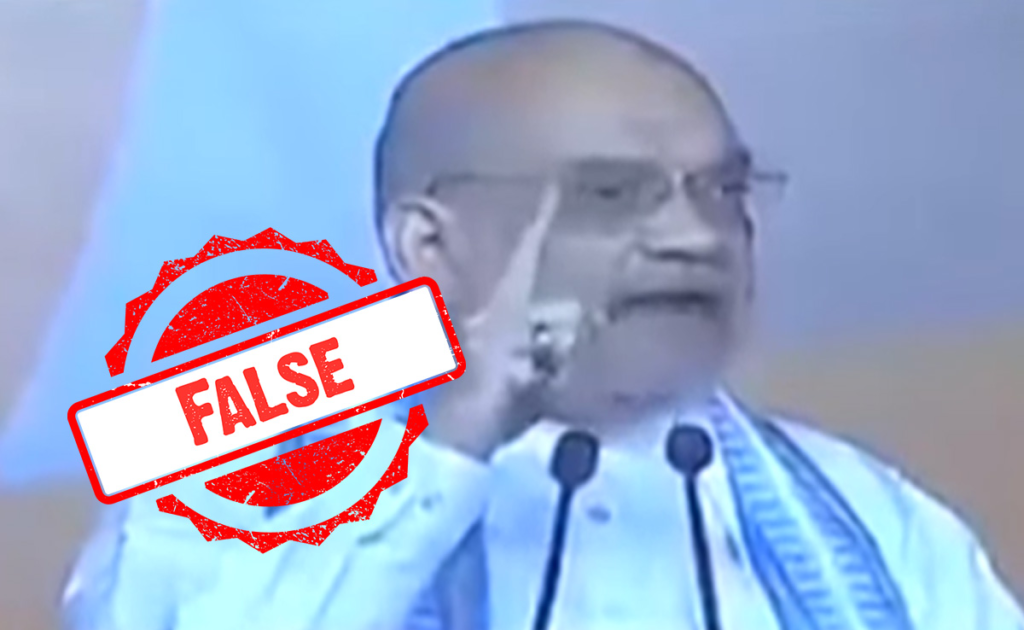The Navigating the Nuances of Misinformation
The Navigating-In recent times, the proliferation of manipulated videos has raised significant concerns, especially in the realm of Indian politics. The mislabeling of these videos, often categorized as ‘deepfakes,’ exacerbates the challenge of distinguishing between genuine content and fabricated misinformation. This article delves into the complexities surrounding the misidentification of altered videos and explores potential regulatory frameworks to address the misuse of artificial intelligence (AI) in disseminating deceptive content.
The Navigating-The Perils of Mislabeling: The Case of Amit Shah’s Altered Video
The Navigating-A recent incident involving a manipulated video of Home Minister Amit Shah underscores the perils of mislabeling. The video falsely depicted Shah announcing an end to reservations for marginalized communities. While various media outlets and political figures hastily labeled it as a ‘deepfake,’ a closer examination by fact-checking organizations revealed that the video was merely doctored using conventional editing techniques. This misattribution not only perpetuates confusion but also undermines efforts to combat misinformation effectively.
The Navigating-Understanding Deepfakes: Unraveling the Misconceptions
The Navigating-The term ‘deepfake’ has become synonymous with any manipulated video, leading to widespread misconceptions. While addressing a rally, Prime Minister Narendra Modi referenced the dangers of deepfakes, citing an example of a video purportedly depicting him dancing. However, subsequent fact-checking revealed that the video featured a Modi lookalike, highlighting the prevalence of misattributions. Similarly, a video involving BJP candidate Dinesh Lal Yadav was erroneously labeled as a deepfake despite being authentic, further exemplifying the challenges of accurate identification.

The Navigating-The Real Political Deepfakes: Examining AI’s Impact on Elections
The Navigating-The use of deepfakes in political contexts is not new, with instances dating back to the Delhi legislative polls in 2020. Several videos featuring BJP leader Manoj Tiwari were found to be altered using AI-generated content, illustrating the evolving landscape of political disinformation. Recent examples, including manipulated videos of Rahul Gandhi and Bollywood actors criticizing the government, underscore the growing sophistication of AI-driven misinformation campaigns. Despite these alarming trends, regulatory bodies such as the Election Commission of India have yet to address the issue comprehensively.
The Navigating-Regulating Deepfakes: Balancing Innovation and Accountability
The regulation of AI technologies presents a complex challenge, exacerbated by the rapid evolution of synthetic media. Efforts to mitigate the misuse of deepfakes must strike a delicate balance between safeguarding against misinformation and upholding principles of free speech. While calls for new legislation abound, legal experts advocate for a nuanced approach that leverages existing laws to address regulatory gaps effectively. By evaluating the implications of deepfakes within the framework of forgery and identity theft, policymakers can develop targeted interventions to combat their proliferation.
Looking Ahead: Toward a Comprehensive Regulatory Framework
As the threat of deepfakes continues to loom large, policymakers must prioritize the development of a comprehensive regulatory framework. Building upon existing legal frameworks and fostering interdisciplinary collaborations can enhance the efficacy of regulatory efforts. Moreover, public awareness campaigns and media literacy initiatives play a crucial role in empowering citizens to discern between genuine and manipulated content. By embracing a multifaceted approach, stakeholders can mitigate the adverse effects of deepfakes and safeguard the integrity of democratic processes.
Conclusion
The misidentification and mislabeling of altered videos pose significant challenges to the integrity of political discourse and democratic governance. By fostering collaboration between policymakers, legal experts, and technologists, it is possible to develop robust regulatory frameworks that effectively address the proliferation of deepfakes. Moreover, concerted efforts to promote media literacy and critical thinking skills are essential in empowering citizens to navigate the complexities of the digital age. As the threat of deepfakes continues to evolve, proactive measures are imperative to safeguard the integrity of democratic institutions and uphold the principles of truth and accountability.

[…] of academic freedom clash with the sensitivities of various stakeholders. In recent years, one such contentious issue has been the Israeli-Palestinian conflict, a longstanding geopolitical dispute that has […]
[…] encapsulates nearly six decades of progress and familial pride, Deanna Yancey, the granddaughter of Ronald Yancey, Georgia Tech’s pioneering first Black graduate, walked across the stage of the […]